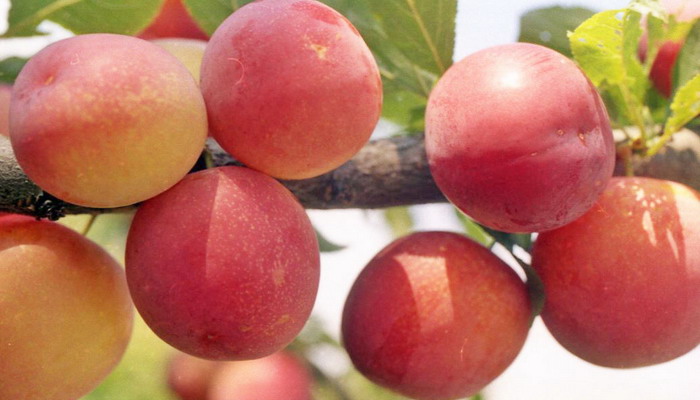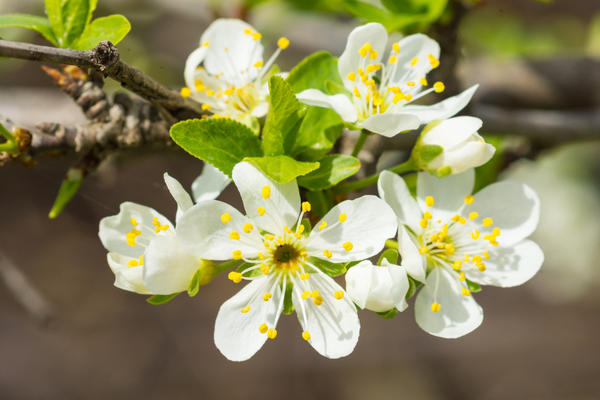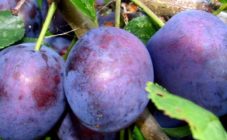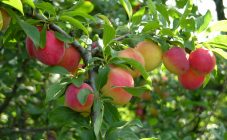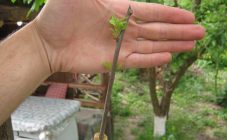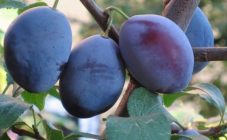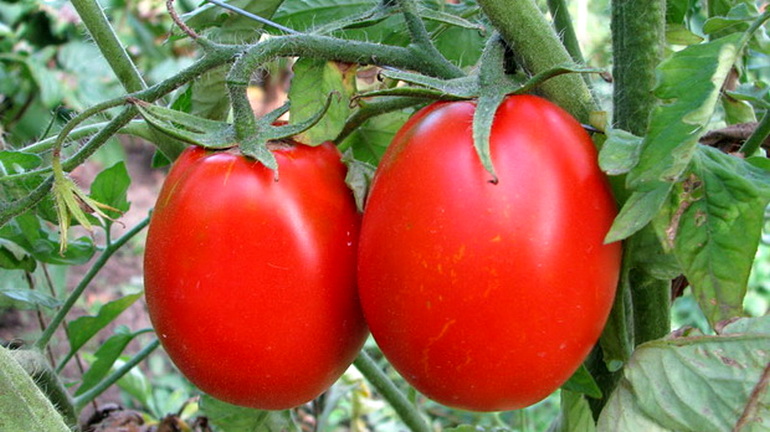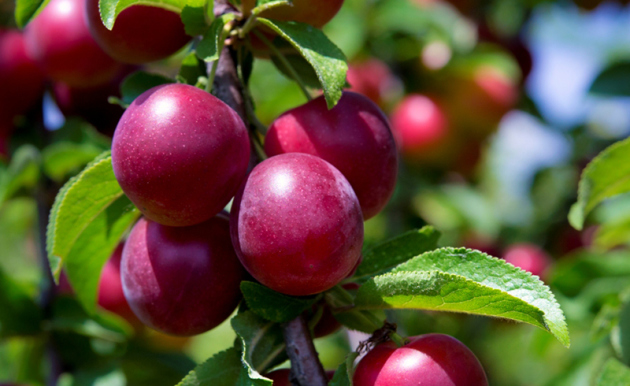Content:
The peach plum came to Russia from Western Europe. The first mention of this culture dates back to 1830. This species is also called Royal Rouge or Red Nectarine. The berries of this plum are rich in vitamins (C, B2, zinc, magnesium, iron).
At the beginning of the 20th century, I. Michurin began developing a frost-resistant variety. The first experimental crop was obtained 20 years later. In the conditions of Central Russia, it is better to use Peach Michurin plum for planting.
Characteristics of the variety
Before purchasing a seedling of this tree, every summer resident should read the description of the Peach plum.
Plum Peach is a short tree with a medium dense crown and smooth bark. The seedlings are developing rapidly. The first crop will appear in 5-7 years, but it will be unstable. The peak yield will come only 15 years after planting and will be about 50 kg per tree. It is then that the gardener will be able to feel all the delights of cultivating this variety.
Initially, this variety was intended for planting in the southern regions of the country, but breeders have developed frost-resistant varieties. The plant tolerates frosts, but for the winter, especially in the conditions of the Moscow region, it is better to cover it. Film, sunflower and corn stalks, straw, burlap are ideal for covering. The roots need to be insulated with organic matter.
- The leaves of the plant are oval, serrated at the edge, slightly pubescent.
- The flowers are white.
- The berries grow on thick, short petioles.
- The fruits of the culture are large. The mass of medium specimens reaches 40-50 g, and large ones reach 70 g.
- The berries are round or oval, flattened at the top. From a lack of heat, the fruits will be dense and tart.
Fruit color depends on the variety of the crop. The main skin color is honey (yellow-green). But the plum growing on the sunny side turns red. The skin is thick, with a blue bloom, covered with white dots. The stone is oval, flat and rough; it is easily separated from the ripe pulp.
The pulp is yellow in color, firm and dense, juicy to taste, with a sour aftertaste, unusually aromatic. In the northern regions, the taste becomes tart. Fruits are stored at room temperature for up to 4 days, in the refrigerator for up to a month. The harvested crop is best processed immediately.
The plant blooms late, and the fruits appear early - from mid-July. The berries are well attached to the tree and crumble little. This culture is resistant to fungus, especially to polystygmosis, to which stone fruits are exposed.
Plum Peach Michurina
This variety originated from a seedling of the White Samara plum, which was pollinated with pollen from the American Washington variety. The plant begins to bear fruit 5-7 years after planting the seedling. Yield peaks in 10 years. In its fruitful years, the plum brings up to 15 kg per tree. Each fruit weighs about 40 g.
The taste is similar to the original Peach plum. This plant is propagated in nurseries. When choosing a seedling, you need to pay attention to the condition of the roots and the absence of signs of disease.
On the basis of this plum, the famous Rossoshanskaya was bred. The tasters gave the taste of this berry 4.6 points out of 5 possible. The main difference between this hybrid and Peach is that the fruits are slightly smaller and the yield is not so high. Planting and caring for this hybrid is the same as for Peaches.
Features of agricultural technology
The place for this culture is chosen bright, spacious and without wind. The site near the fence, wall, in the lowland is not suitable. In the shade, the leaves of the plant turn pale, the berries do not turn into the correct color and lose their taste. The culture loves space - there must be at least 3 m to the neighboring tree. Fertile and moist (but not damp) soil is ideal for a seedling. The excess moisture is indicated by yellowed and dry leaves.
The plant is best planted in the spring as it is unstable against frost. The hole must be dug in advance (in the fall, or 15 days before planting). The distance between the support stick and the seedling should be about 15 cm. Tie the tree with a soft and elastic rope, make sure that it does not cut into the bark. After 2 years, the stake is removed and the tree grows on its own.
Landing rules:
- dig a hole with a diameter of 70 cm and a depth of 50 cm;
- install a stick 1 meter long at the bottom of the pit (for further tying the tree);
- fill the pit with a mixture of earth, compost (2 buckets), ash (0.5 kg) and superphosphate (200 g).
Proper care will allow the plant to take root after planting. This variety loves moisture, so watering should be done once a week. The seedling must be watered with two buckets of warm water. Watering the tree doubles during the flowering period (May-June) and during the formation and ripening of fruits (August-September).
In the fall, the tree must be fed with mineral fertilizers. As the plant grows, the amount of fertilizer is increased every season, guided by the instructions of the growers and the opinions of experienced gardeners. Be sure to include whitewashing trees (spring and autumn) in the care. Autumn whitewashing is especially important because it destroys pests.
To shape the crown of the tree, it must be pruned every spring. Pruning should take place until the buds are swollen and before sap begins to flow. The sparse-tiered crown shape is most preferable for this variety. It is necessary to thin out fruits in order to prevent them from crumbling and reducing productivity.
Advantages and disadvantages of the variety
Benefits:
- early maturation;
- externally attractive fruits;
- high productivity during the period of regular fruiting;
- versatility of fruit use;
- large fruits;
- high taste;
- resistance to diseases and pests.
The main disadvantage is the average hardiness / winter hardiness. Culture requires increased attention to itself during winter and frost, it must be covered for this period. The disadvantages include self-infertility, the culture requires planting a pollinator plant next to it.
Having planted a plum of this variety on his site, any summer resident will be satisfied when he collects a rich and sweet harvest.
